How I got to work at Steer
Steer Boot Camp - Day 1 "It's All New To Me"
Steer Boot Camp - Day 2 "Food, Lots of Food"
After my atrocious efforts the previous day, where I "sampled" and dirtied one too many plates, I was demoted back to back section to do basic prep work. Executive Chef Shaun told me that I would be given another opportunity to work the pass if I could prove my skills in the kitchen, hence it was a big day of learning ahead of me. More on that later. Firstly, there's always time for a photo op right? As I'm such a massive fan of Paul Wilson, when he popped by the restaurant, I had to ask for a photo and also asked many questions about the direction of the restaurant. Paul told me that Steer will be re-launched as a New York Steak house, focusing on good meat and simple dishes. There will be other dishes for those who don't necessarily like or want a steak. Desserts will be classic American desserts. All will be known soon in a few weeks. I look forward to going back to try the new menu. In the photo below is Executive Chef Shaun Nielsen, me obviously, and Consultant Chef Paul Wilson.
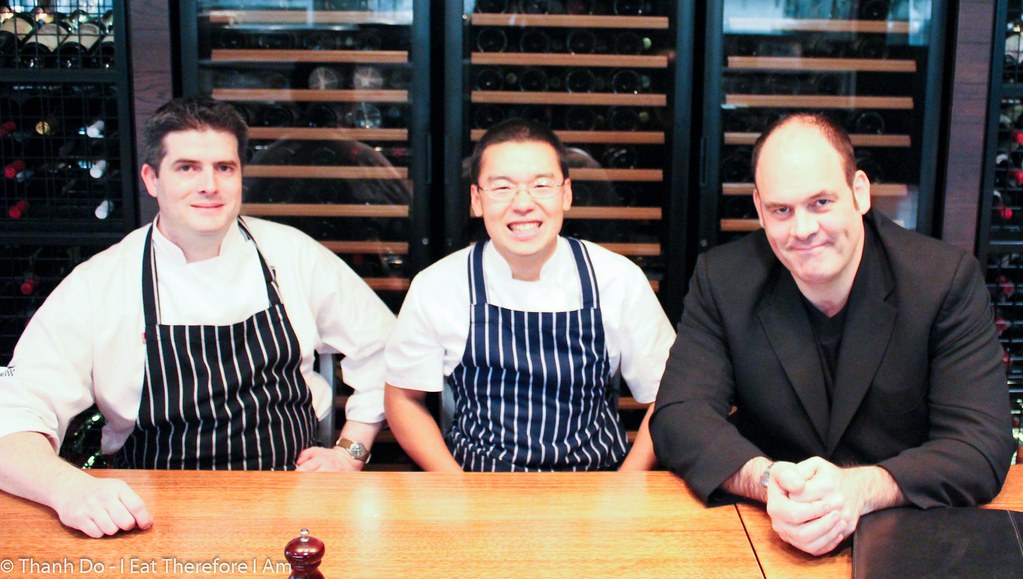
First lesson of the day was to learn to bone out some rib eye steaks. Shaun grabbed a beautifully aged Gippsland Rib Eye. Look at the colour. It was a rich red colour with lots of marbling and a firm texture. He described that the rib eye could be sectioned into five steaks of at least 650 grams. The last segment could be turned into a scotch fillet steak as that part extends into the scotch fillet area. I was always confused whether a rib eye was the same as a scotch fillet, and now I know they are connected. Shaun skilfully carved out five rib eye steaks using his flexible carving knife. He then trimmed off some of the fat, saying that he preferred to keep some fat as that renders beautifully and gives the steak flavour. I can't agree more with that. I love the fatty parts of steaks and always pick a fattier cut rather than fillets. He then cleaned the bones for presentation. Shaun showed his skills in estimating when he told me that a certain steak was heavier than another one. I disagreed and when we weighed it, he was spot on, even to the fact that one weighed about 10 grams more than the other. I was totally impressed.
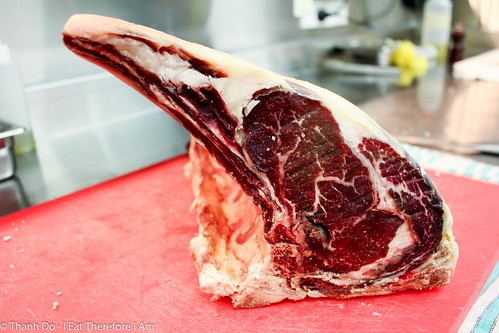
The next skill I learnt was to open an oyster. I've always gotten the fishmonger to open the oysters for me, but from now on, I'm going to open my own so I can retain that glorious oyster liquid. Opening an oyster is not easy when you don't know how. I struggled for the first dozen. And even when I thought I had mastered it, the oysters changed types on me and it was hard again. But now, having opened quite a few, I can do it without stabbing myself or sweating a river. The trick is to angle the knife slightly at shallow angle and then ply away. Just as you feel the back end of the oyster crack open a bit, you start twisting the knife and push forward with the twisting action. And out pops the shell. You detach the oyster from the muscle and voila, one shucked oyster with all its juices intact.
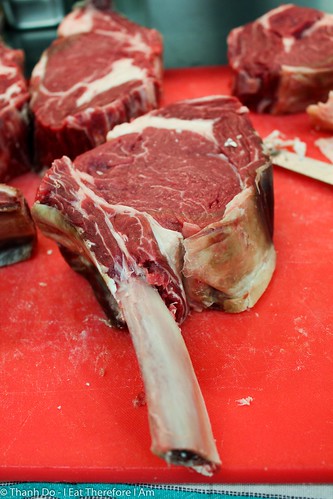

Then it was on to learning how to make a choux pastry and making churros. The key to a choux pastry is to dry out the mixture properly. I didn't know that choux pastry can be stored in the fridge for a couple of days. To make a churros, you need to pipe it into hot oil that you first test with a sample one. Remember to drop it from a low height, or you may end up with oil splatter like I did. Ooops.

Then it was on to learn to make some salads and a Bernaise sauce. I'm embarrassed to admit that I can't make a basic mayonnaise or Hollandaise sauce. But now I do. And a Bernaise sauce is just a Hollandaise with tarragon added. So here are the key differences. A mayonnaise is made by mixing oil into egg yolks. No heat is needed. A Hollandaise is made by mixing clarified butter into a sabayon (egg yolks mixed over a double boiler until thick). A Bernaise sauce has the addition of a tarragon reduction (made from vinegar, tarragon, and other herbs that you want) and fresh tarragon. I beat and beat and beat until I'm now pretty good at making a Bernaise. Of course I complained and said that we should use an electric mixer rather than hand, but apparently all the chefs do it by hand in the kitchen. Must be some crazy punishment thing for apprentices haha. Having learnt to make my Bernaise from Commis chef Jeffery, he also taught me to mix a few basic salads and plate them up. You can see Jefferey below with the egg shells over his eyes. I also met Pastry Chef Sarah, smiling happily below.
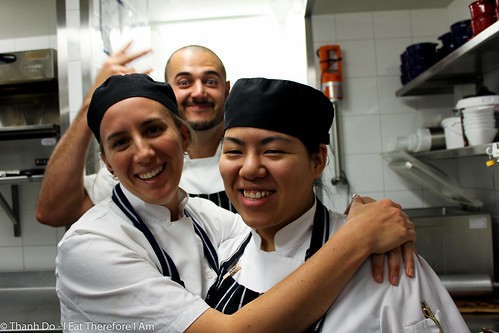
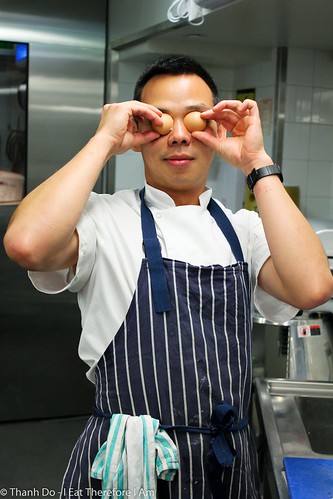
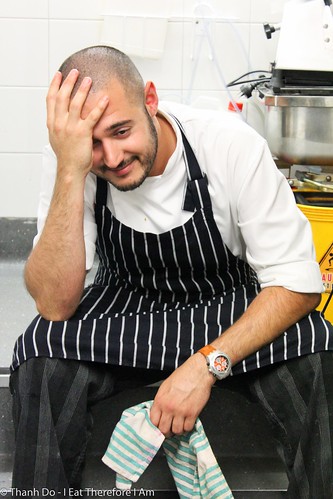
Finally, Bruno, the enigmatic Brazilian Chef de Partie (above right) was there to lighten my day but also to teach me the ways of Brazilian food. He explained about various dishes and even made me the most delicious feijoada. Out of all the delicious and more sophisticated dishes in the restaurant, my favourite savoury thing that I tasted was this peasant dish, feijoada. It was a stew of black beans, meat, sausages mixed with cassava flour (farofa), served over rice and with orange segments. I was skeptical as to now good it would taste as it didn't look very inviting, but the flavours were perfect. Each element added another dimension, even the orange segments that cut through the dish and lightened it significantly. That was my after work meal for a few nights, made with "love and care" by Bruno. He was all about cooking food with love, and I have to admit that his outlook really appealed to me. It was very genuine and I could see a glimpse of why anyone would want to be a chef. More on that topic in the next post.
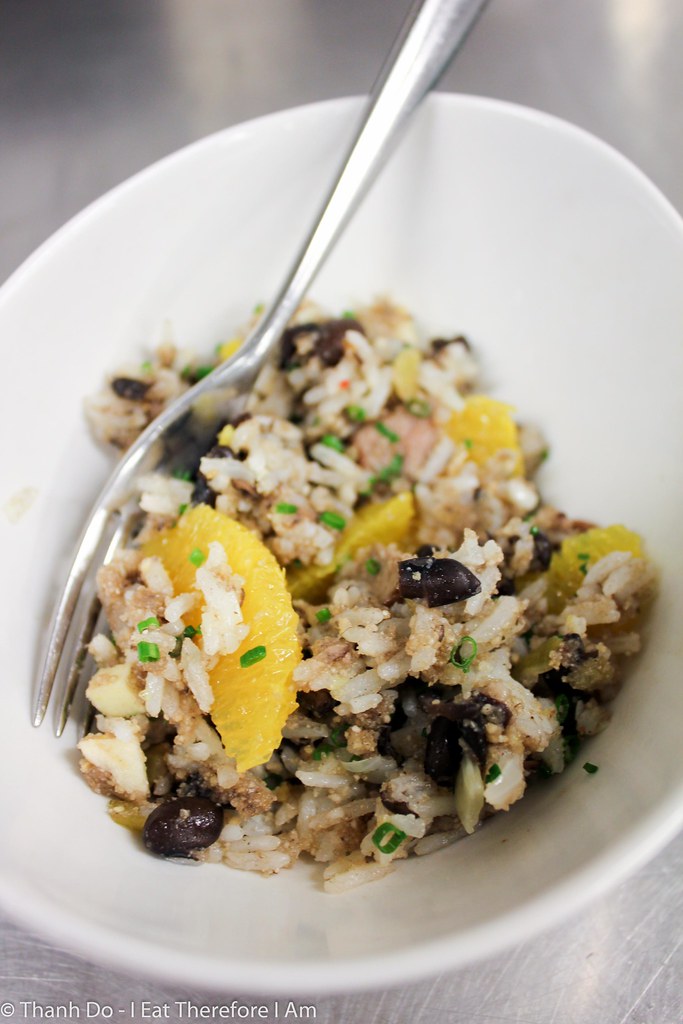
So that was day 3, where I learnt a lot of basic skills in the kitchen, useful skills that I can still now use. That was also the start of my potato washing/peeling/cutting days. I cursed everyone that ordered chips, as the humble fry is so much work. It's not all glamourous cooking as you see on TV, there's a lot of basic work that goes on for 90% of the time.
You can follow me on Twitter, Facebook and view the Flickr stream for more photos.
Flickr
Brilliant... very well written. :)
ReplyDeleteLOVE IT, well said and well trained
ReplyDeletemeow.....
You sure seem to be enjoying your time in the kitchin!
ReplyDeleteloving your write-ups as I'm getting to live the experience vicariously - I sure wouldn't want to be in the kitchen!
ReplyDeleteI love this post in particular. Loved reading about making choux pastry and churros. I also loved reading about Brazilian food & the feijoada. yum!! Bruno sounds like a gem.
ReplyDeleteHeidi xo
Neat - glad you're doing some of the grunt work and not just swanning around taking photos and eating. ;)
ReplyDeletePenny and Kenneth, thank you.
ReplyDeleteMichelle, it was definitely fun, most of the time.
Cindy, the kitchen is definitely hard work and I wouldn't want to be there long term.
Heidi, this day was also when I got to learn the most in terms of cooking. The feijoada is amazing. And Bruno is lots of fun.
Agnes, well I'm not just a pretty face. I contributed greatly to the fries.
bahahahaah Hamish wears the same pants as Bruno haahaha they make him feel like a gangsta because they are wider than normal chef pants hahaahahahahaha
ReplyDeleteMerowyn, I think all the chefs shop at the same places and chefs pants don't exactly come in too many styles. They are pretty funny pants I have to say.
ReplyDelete